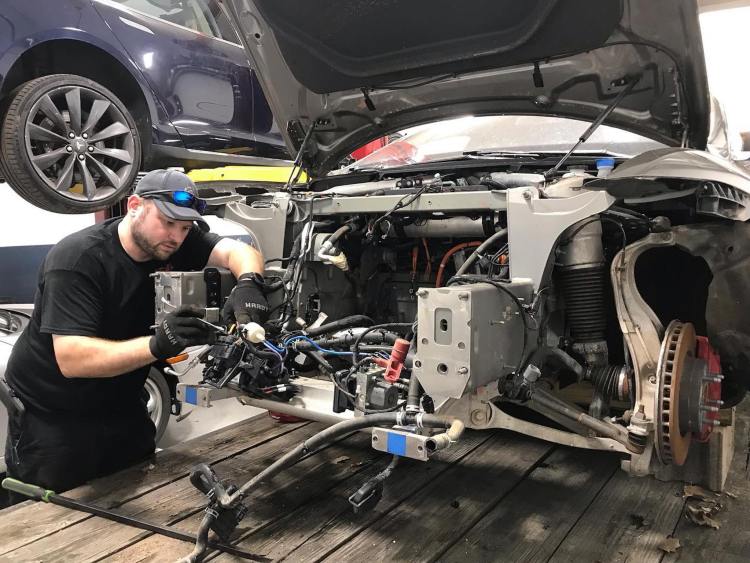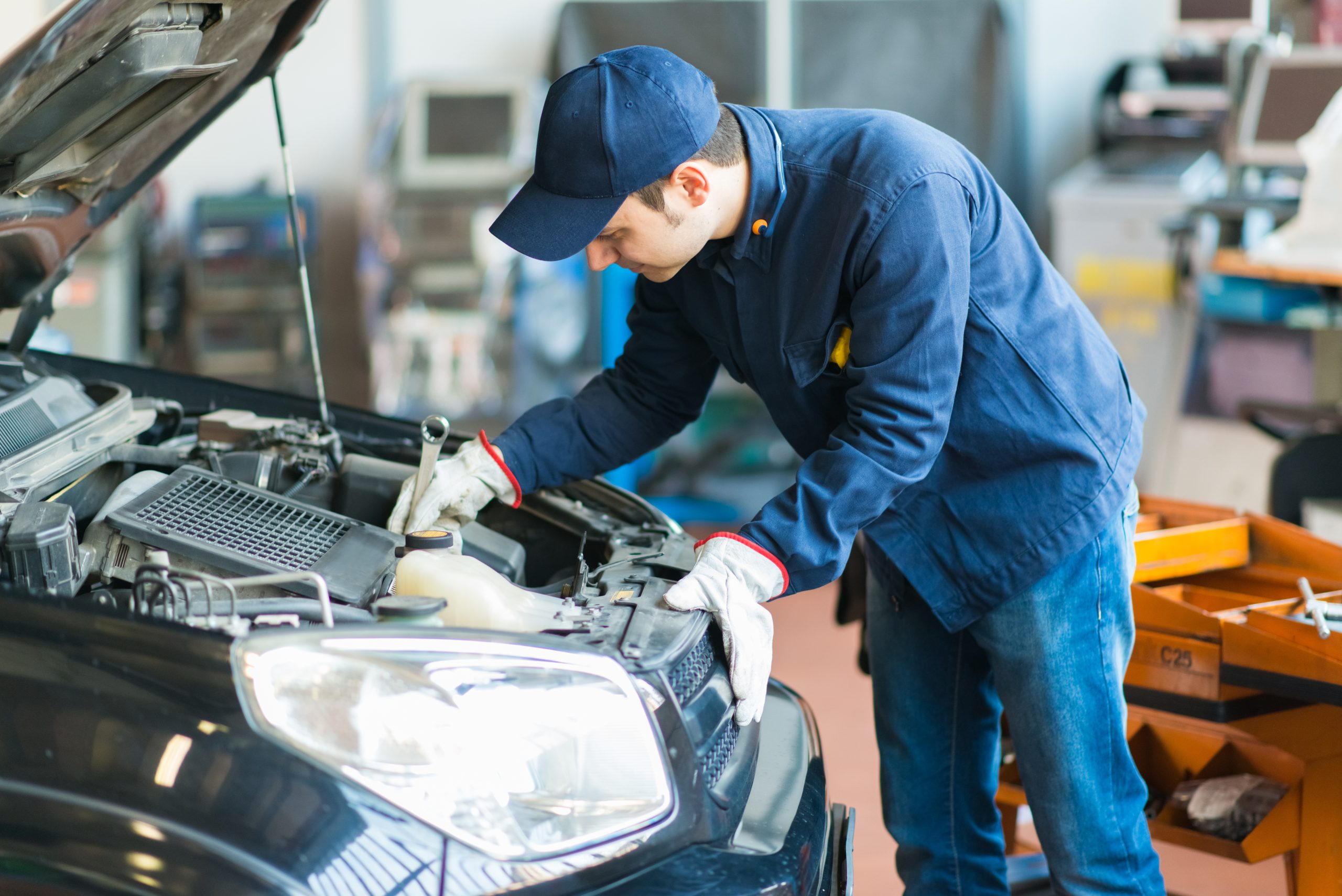
Nissan Xterra - An all-terrain vehicle aimed for the off-roading crowd. The Xterra's robust design is reminiscent of the Xterra but retains many of the distinctive features. All trademarks from the Xterra have been retained including a stepped roof, integrated storage, a liftgate with an optional first aid kit, interior storage, and a latchable cover. Nissan Xterra comes with a long wheelbase along with a rugged plastic cover for the rear bumper steps.
4.0-liter V6 motor
Off-roading is easier with a four-wheel-drive SUV. The Nissan Xterra does not disappoint. This model is capable of off-roading with a 4.0-liter V6 engine. The Xterra is noisy with its all-terrain tires.

Ground clearance: 9.5 inches
With a 9.5-inch ground clearance, the Nissan Xterra is an off-roader's dream car. You don't need any special off-road gear to get it through most trails. The Xterra is also capable of a staggering 33.2 degree approach/departure angle. For even more off-road capability, the Nissan Xterra Off-Road offers many off-road features, such as an electronic hill descent control, Hill Start Assist, and Bilstein shocks.
Sturdy suspension
The Nissan Xterra is an off-road vehicle with a robust suspension. It also has hill start aid and hill descend control. The truck comes standard with a steel suspension that is heavy duty and features a double wishbone design, rigid leaf springs at the rear, and a stabilizer bar at the front. These features transform large bumps into a comfortable ride, for both the driver as well as passengers.
Long wheelbase
If you enjoy off roading and exploring the great outdoors, you may want to consider a Nissan Xterra long wheelbase. This car has been a popular choice for off-road enthusiasts for many years. However, it does have some limitations. For one thing, the longer wheelbase means that turning it can be a challenge. Contrary to a sedan it is much more difficult than a truck to maneuver around obstacles. A short wheelbase vehicle has some disadvantages. They have less interior space and are difficult to maneuver on roads. Aside from that, there are higher chances of them rolling while off-roading.
Sporty looks
The exterior of the Nissan Xterra offroad vehicle has been given a sporty new look. It borrowed the look and style of its midsize brother, the Nissan Frontier, for its design. The truck was a great success and the Xterra should be equally popular. It could also get a more rugged design as Nissan made the truck bigger, instead of smaller.

Built-to-be-customized
The Ford Bronco is back in production and has already received pre-orders from over 200,000 people. It's a popular vehicle that is difficult to imagine Nissan not wanting to build one. The Xterra can perform all of the Ford Bronco's functions, plus maybe more. We must admit that we'd rather have a Nissan Xterra.
FAQ
What length is an automotive course?
An automotive course lasts 3 years.
The first year of your training is devoted to theory. You will learn all about cars. The second year is dedicated towards practical training. This includes learning how to drive, fix engine problems, and doing other maintenance jobs around your car. The last year of your training is spent on practical training, where you learn how to fix real-world problems.
What qualifications are necessary to become a truck driver mechanic?
Although you don't need to have any formal qualifications, your experience working with trucks and engines is invaluable. Your experience is invaluable as you know how to diagnose problems quickly and efficiently.
Also, your knowledge of diesel technology will be a benefit as you can help us understand which parts are needed for our vehicles.
What are the qualifications for an automotive technician
You must have high school, or GED, and be able to read and write well in English and math. Also, you must be able read and write. The written test will be passed and you will then have to take several practical exams before you can begin work.
What qualifications do I need to become a mechanic?
You will need to pass several exams in order to become a mechanic. These include:
-
A general knowledge test
-
A practical exam
-
An apprenticeship test
These tests are intended to make sure you have a solid understanding of the basics of mechanics before you can start your career as a mechanic.
Once you've passed these tests, you'll be eligible to work as a mechanic. An apprenticeship is still required. This will involve trade training.
To learn all there is to know about fixing vehicles, you will need workshops and classes. Additionally, you will need to work with experienced mechanics.
A mechanic must be highly focused and attentive to detail in order to succeed. Vehicle repairs require you to be very attentive.
To be a successful mechanic, patience and perseverance are essential. If you don’t enjoy following instructions, this might not be the right career path.
However, if you love cars or enjoy working on them, you might be happy in this field.
What is the average time it takes to become a mechanic?
You need to have years of experience and practice before you can become a master mechanic. Working under the guidance of a professional mechanic is the best way to learn how repair cars.
You will be required to spend time at a car garage learning as much as you can about cars. Mechanical engineering books will be required to learn about mechanics and design.
Auto school is also required.
It is important to get started early. Don't wait until you're older to begin studying automotive technology. Get started now if you are interested in becoming a mechanic.
Statistics
- Apprentice mechanics earn significantly less hourly than mechanics who have completed training, with a median wage of approximately $14.50 an hour, according to PayScale. (jobhero.com)
- According to the BLS, the median annual salary for automotive service technicians and mechanics in the United States was $44,050 in May 2020. (uti.edu)
- There were 749,900 jobs available for automotive service technicians and mechanics in 2016, which is expected to grow by six percent through 2026. (jobhero.com)
External Links
How To
How to correctly diagnose your vehicle for repairs
You should first examine the symptoms your car is showing to determine if it requires repairs. Follow these steps to properly diagnose your vehicle.
-
Check engine lights. You should inspect the dashboard lights, such as the engine light indicator and the oil pressure gauge. Also, check the battery light indicator. It could indicate that your vehicle is having problems.
-
Check the treads of your tires. Tires with worn treads could cause problems when handling or braking. You should inspect the treads on your wheel. They should be smooth and clean. The best way to do this is to remove the wheels and take them off. To check the condition of your treads, use a flashlight.
-
Observe the brake fluid level. It is important to keep track of how much brake fluid you have in your car. This will ensure your brakes function properly. If your brake fluid level is low they might not work properly when you apply pressure.
-
Test the suspension system. Most vehicles have a suspension system that absorbs shocks and vibrations. It allows for better control, smooth acceleration, and deceleration. A suspension problem can cause your vehicle to feel wobbly and shake uncontrollably. To determine whether your vehicle may have a suspension issue, you can try to put weight on the rear or front axle and watch the movement.
-
Take a look at the steering column. Steering columns connect the steering wheels to other parts of the vehicle. Sometimes, steering columns are damaged by accidents. Replace it if your steering column feels loose or unsteady.
-
The exhaust pipe should be observed. The exhaust pipes are responsible for moving gases from the combustion chamber into the atmosphere. Exhaust pipes that are cracked or leaking can allow harmful fumes to enter your cabin. Also, if your tailpipe is bent, you should fix it immediately.
-
Take a look under your hood. If you see anything unusual, take a look under the hood. You could have fluids leaking from the engine. In addition, if you notice an unusual smell coming from your engine compartment, you should contact a professional technician.
-
You should inspect your air filter. The outside environment collects dust and other particles in the vehicle's filter. Dirty air filters can cause your vehicle to run poorly. Replace your air filter regularly.
-
Make sure you check the fan belt. Your vehicle's fanbel is what connects the engine and the transmission. If the fan belt is damaged, the engine won’t turn. Replacing the belt is simple. All you need to replace the belt is a screwdriver with pliers.
-
You should inspect the radiator and hoses. The radiator hose is used to carry water from the radiator to your engine. It can cause hot liquid to leak onto the engine if it is damaged or cracked. To repair the leaky hose, all you need is a pair if needle-nosepliers.
-
Check the windshield wipers. Windshield wipers use electricity to clean away snow and rain. If they stop working they could leave streaks behind on your window glass. To fix the problem, simply change the washer fluid.
-
Verify the condition of your battery cables. The battery cables supply power to your car's electrical systems. When you replace batteries, make sure to disconnect the negative cable first. Failure to do so can damage your alternator.
-
Be sure to check your headlights. Headlights help you see the road ahead. Bad visibility can be caused by headlights that don't work correctly. Inspect the bulbs for signs of burnt out.
-
Pay attention to the lights. The lights are there to warn other drivers if they approach you at night. If one doesn't work, it could distract you and lead to an accident.
-
Check your brakes. Brakes will reduce the speed of your car in case of an accident. You may lose control of your vehicle and crash if the brakes don't function properly.
-
Change your oil. Keep your engine lubricated with oil. This oil helps to prevent metal parts becoming too worn out. It is recommended that the oil be changed every other month.